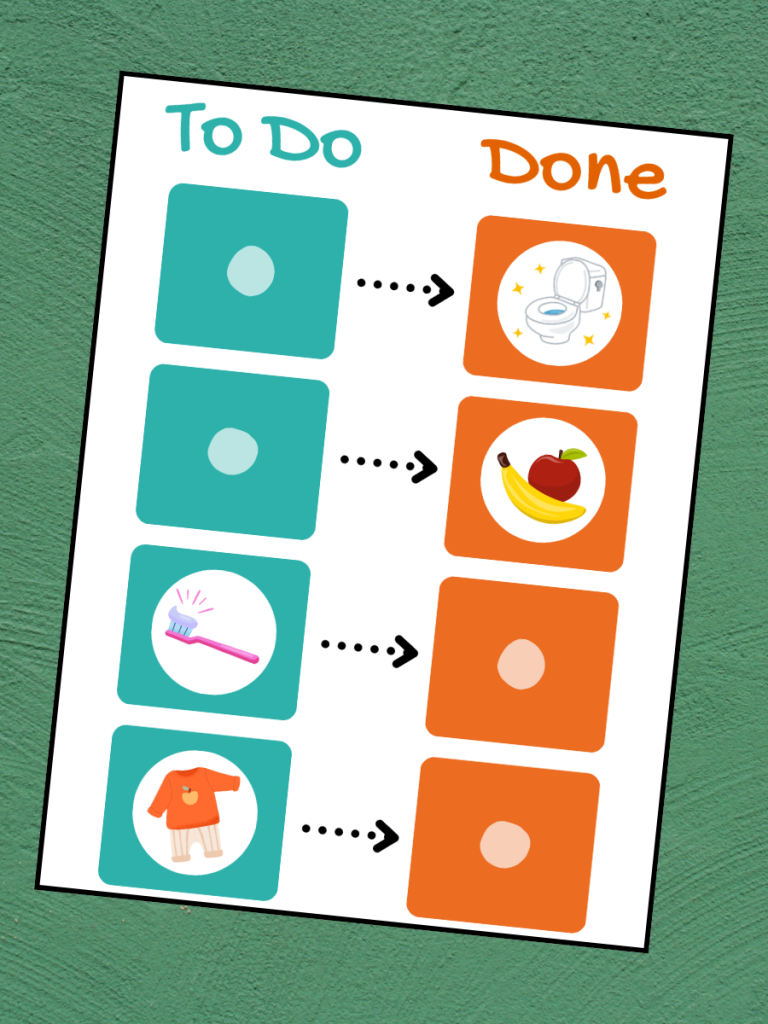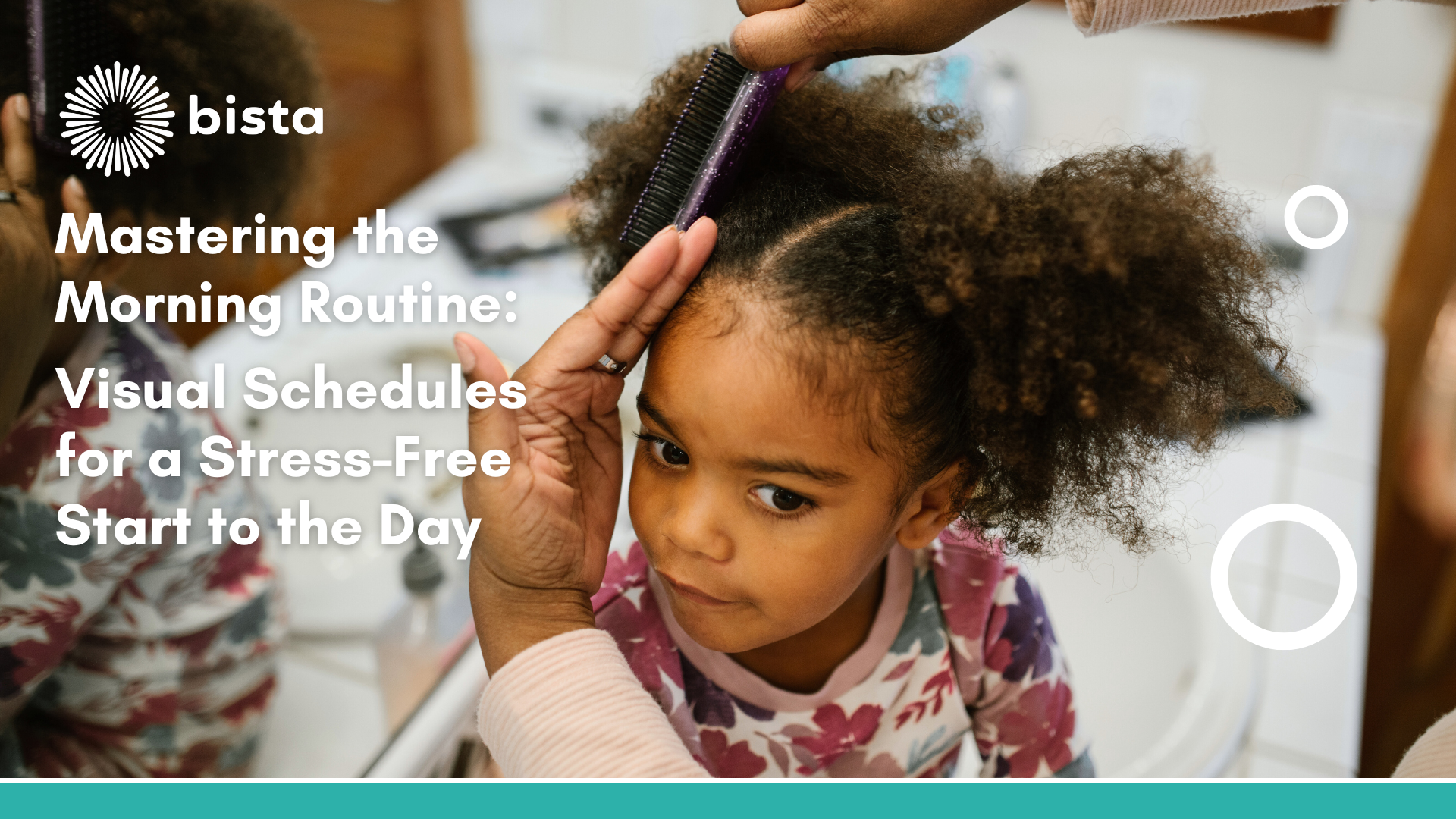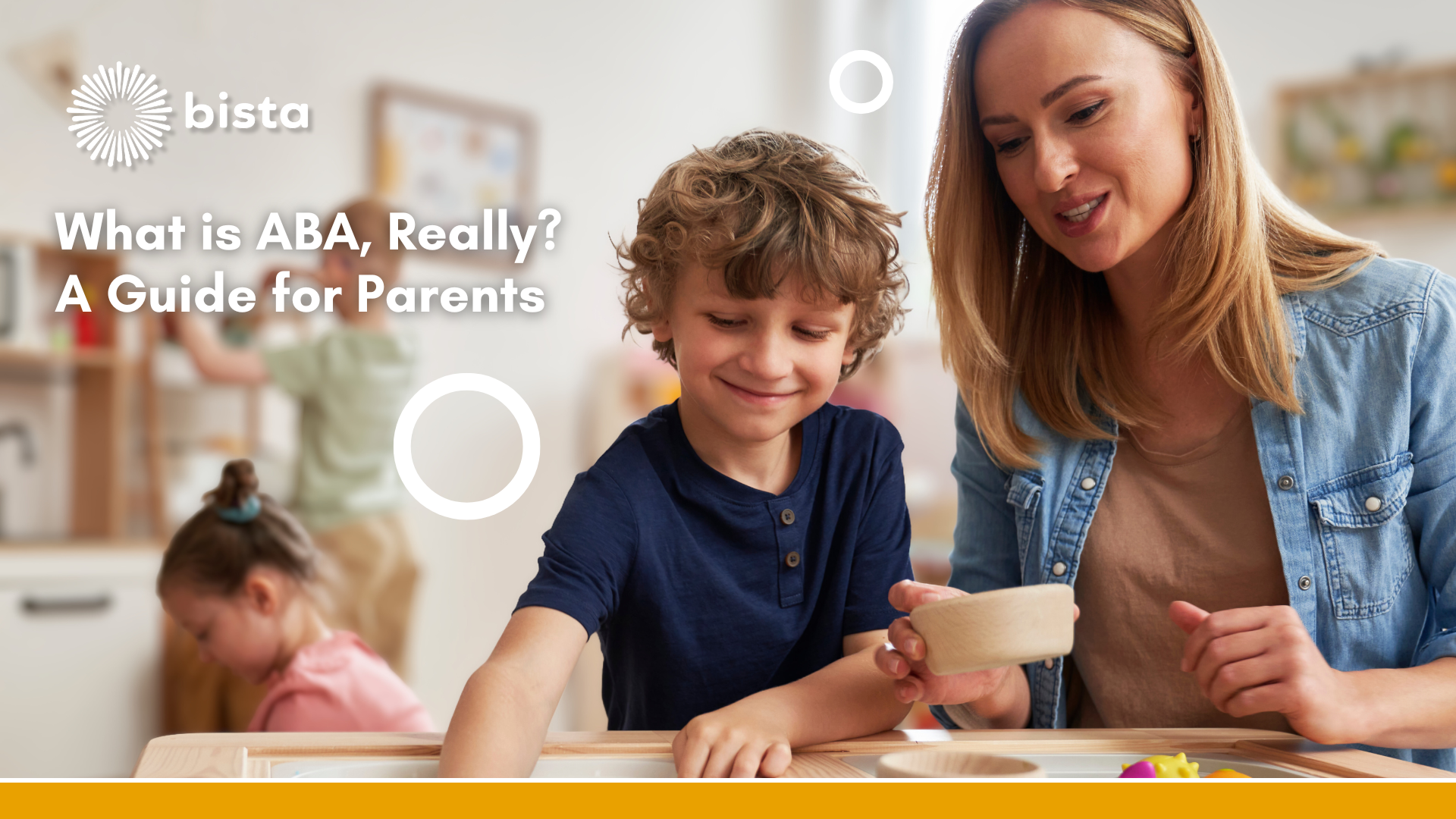Is your morning a whirlwind of “hurry up!” and forgotten backpacks? Getting out the door on time can be one of the biggest challenges of the day, especially when you’re navigating multiple steps and transitions. The good news is that there’s a simple and effective tool that can transform your mornings from chaotic to calm: a visual schedule.
A visual schedule is a powerful ABA tool that uses pictures, photos, or drawings to show the steps of a routine in the order they happen. It’s a game-changer because it provides clarity, reduces anxiety, and empowers your child to become more independent.
What is a Visual Schedule and Why Does It Work?
Simply put, a visual schedule shows your child what’s next. Instead of relying on verbal cues that can be hard to remember or process, your child can look at the pictures to understand the sequence of events.
- It creates predictability. Knowing what to expect reduces anxiety and resistance.
- It builds independence. Your child can follow the steps on their own, giving them a sense of control and accomplishment.
- It creates structure. Instead of you constantly reminding them, you can simply point to the schedule. The schedule, not you, becomes the guide.
How to Create Your Own Visual Schedule
Creating a visual schedule is easy and can be done with simple materials you likely already have at home.
- Gather your visuals. You can use online images, simple hand-drawn pictures, or even photos of your child doing the activities (e.g., a photo of them brushing their teeth).
- Choose a few key steps. Start with 3-5 steps to avoid overwhelming your child. Common morning routine steps include: wake up, use the bathroom, get dressed, eat breakfast, brush teeth, and put on shoes.
- Put it in a visible place. Display the schedule at your child’s eye level in a high-traffic area, like their bedroom door or the kitchen.
- Make it interactive. Consider adding a system where your child can move a picture to a “finished” box or flip it over once a step is complete.

Tips for Making Your Morning Routine a Success
A visual schedule is most effective when used consistently. Here are a few tips to make it a positive part of your morning routine.
- Introduce it with enthusiasm. Explain how the schedule will help them know what’s next.
- Use positive reinforcement. When your child completes a step on their own, offer lots of specific praise, like, “You did it! You put your shoes on all by yourself!“
- Be patient and flexible. It takes time to learn a new routine. If a step gets skipped or a day goes off track, it’s okay! Just come back to the schedule tomorrow.
With a little practice, a visual schedule can help turn your stressful mornings into a smooth, stress-free start to the day, giving your child confidence and giving you a sense of calm.
Every child is unique, and these tips may look different depending on your child’s preferences and needs. This content is for general informational purposes and is not intended as specific medical or therapeutic advice.



